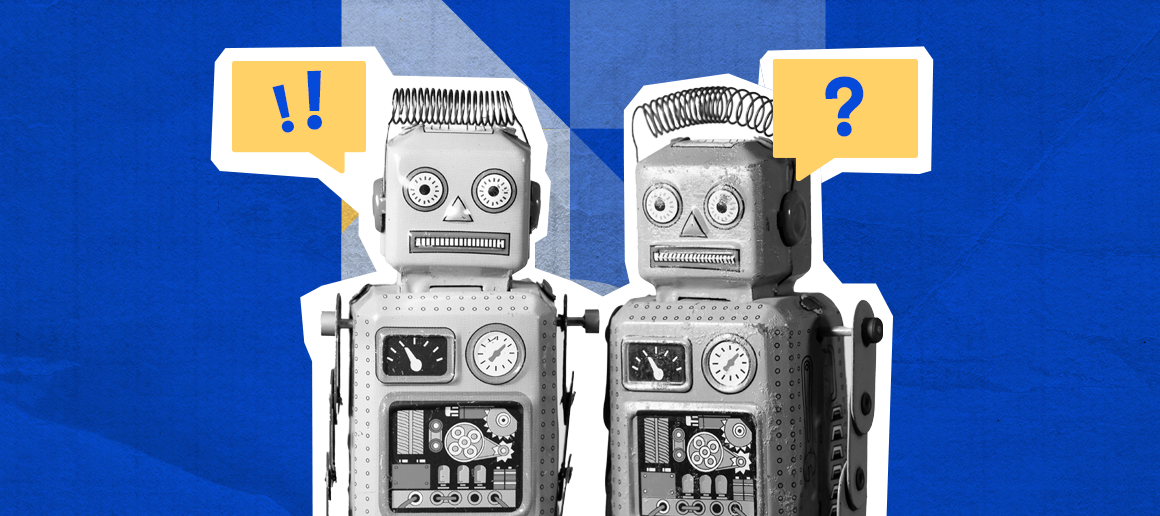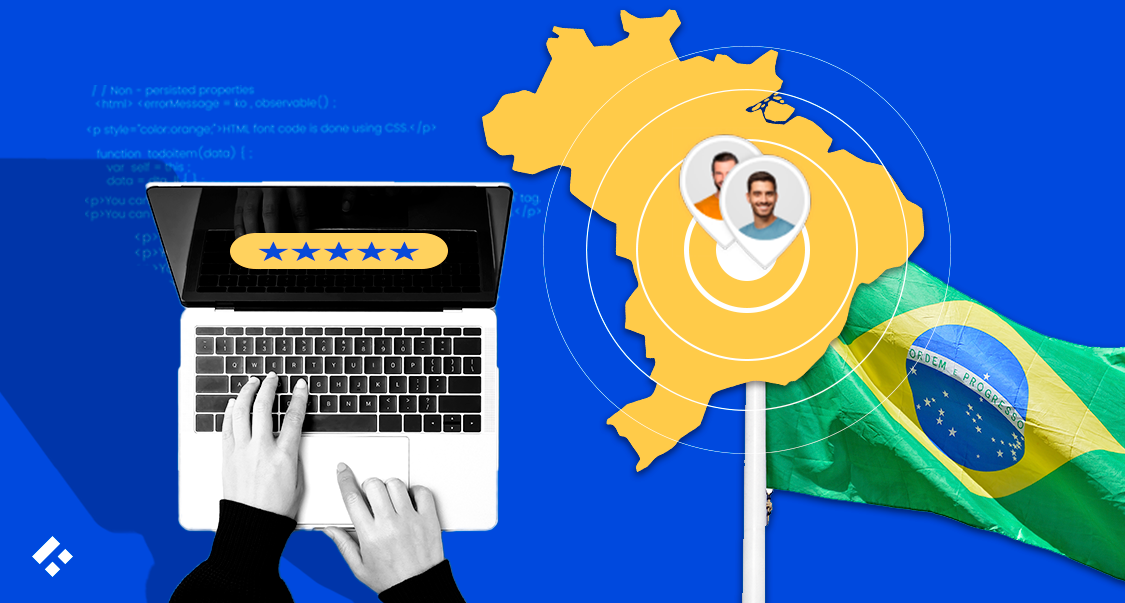Chatbots stimulate conversations between computers and humans. Artificial intelligence is the principal technology powering this faculty. Everyday examples of chatbots include Siri and Google Assistant.
In the past, such a feat as sentient computers was feared. At least in science fiction movies, the idea of a machine with human capabilities could hardly be a favorable outcome. But today, chatbots are a business strategy.
In 2020, four out of five businesses planned to use chatbots. Now, you can almost guarantee that many of those businesses have met that goal, and then some.
Communication is an essential part of meeting consumer needs. But when all of your organic employees are busy, there’s no reason why this task shouldn’t be outsourced to capable machines.
A chatbot application can be an ingenious way to optimize business processes and enhance customer satisfaction. For more information on what a chatbot is and how it works, keep reading!
Are you ready to start your development project?
We have the developers you need to take your development project in the right direction.
Companies are proven to grow their business faster with Trio.
What Is a Chatbot?
A chatbot is a type of program that can interact with a person or person(s) through text or voice.

These interactions are designed to feel natural. They should not be vastly different from the dialogue that would occur between multiple humans in the absence of a mechanical interlocutor.
You’ll likely encounter chatbots on the following platforms:
- Websites
- Mobile apps
- Messaging applications
- Operating systems (for computer and mobile devices)
There are two varieties of chatbots that you should be familiar with — closed and open, also known as rule-based and conversational.
The first is a traditional chatbot. For instance, if you’re on a website and need some help, often a chatbot is the initial channel you will need to go through to get the answers you need.
These chatbots are usually equipped to answer frequently asked questions. But they are also prepared to transfer you to a live agent if they feel your issue is too complex for them to handle.
As these chatbots are closed, they can only execute a pre-written script or flow of communication. Therefore, it can be difficult to provide constructive customer service if a customer’s desires are outside of the parameters of a given script.
Recently, a new class of chatbots has emerged from the more classical comprehension of chatbot technology. These chatbots, referred to as open chatbots, promote a more animated and less scripted mode of conversation.
Digital assistants fall under the category of open chatbots. Sometimes called virtual assistants, digital assistants are voice-activated software that can perform almost any electronic task you can imagine through integrations with other apps.
If you’ve asked your Google Home what time it is, for example, or asked Siri about the weather, you’ve been using a chatbot all along.
How Do Chatbots Work?
Chatbots utilize a number of unique technologies to operate effectively. A good bit of a chatbot’s capacity is rooted in a deep understanding of language and linguistics.
There are three primary orientations in which a chatbot makes sense of text and speech and produces a response.
Pattern Matching
Rule-based chatbots chiefly use pattern matching to obtain desirable results. Pattern matching is more or less a document retrieval system that relies on a database and keyword identification to gather information.
In this methodology, chatbots parse customer input for keywords. They then scan for documents like blog articles for those same keywords and retrieve words and phrases that are deemed relevant.
Pattern matching is a more in-depth process than a simple if-then workflow script. But this method still lacks a firm grasp of context in a conversation.
Natural Language Processing (NLP)
Natural language processing (NLP) is a large subsection of computer science that works to determine the meaning of language through text or voice data.
Unlike pattern matching, NLP is more concerned with the context of language. Thus, NLP guides computers in understanding figurative language like homonyms, homophones, sarcasm, idioms, metaphors, grammar, syntax, and more.
NLP involves several high-complexity tasks, including but not limited to:
- sentiment analysis
- tokenization
- dependency parsing
- named entity recognition
Natural Language Understanding (NLU)
Natural language understanding (NLU), alternatively called natural language interpretation (NLI) is a sector of NLP related to reading comprehension.
Through NLU, machines break down text and speech from customer input, or queries, into data structures so that the computer can better understand what is being said.
These structures are identified using the following concepts:
- Entities
- Intents
- Context
To illustrate how NLU would evaluate a query, consider the following input, “When is my food arriving?”
- Entities represent keywords. The keyword, “food” from above would stand out from the user input. Therefore, the entities element of NLU would extract this keyword in order to collect more intel about the customer’s request.
- Intent determines the action a chatbot must perform. Given the aforementioned text, NLU would presume that the user wants more details on a food order delivery in progress.
- Context in NLU is not dependent on previous conversation history. Computers do not have the ability to remember the last question(s) a user has asked.
Instead, machines must store states in order to differentiate what stage of a conversation is taking place. Chatbot programs may flag phrases like “food arriving” or take note of parameters like the chosen restaurant or current time to associate intent with context.
How Do Artificial Intelligence and Chatbots Work Together?
Chatbot programs employ artificial intelligence to ensure that conversations between chatbot and human speakers are overall organic, and not forced.

Though rule-based chatbots can get along fine without much use of AI, conversational chatbots need AI to understand and respond to human speech patterns.
Straightforward, cut and dry dialogue should be easy enough to follow along. However, this is not how humans speak.
For instance, humans may interrupt in the middle of sentences or decide not to follow through with what they initially set out to do before setting new objectives for a digital assistant to complete.
This is where natural language processing and machine learning come in.
Both of these technologies comprise artificial intelligence.
Machine learning (ML) specifically makes use of algorithms, prompting machines to improve through experience and data.
Artificial intelligence is integral to open chatbots that wish to navigate communication with humans in a human-like manner.

Elevate Your Team with Trio AI Talent
Empower Your Projects with Trio’s Elite Tech Teams
3 Advantages of Chatbots
Deploying chatbots has the potential to boost your business growth over time. While people still have their doubts about talking machines, here are some ways this type of software development can improve your business:
1. Cut Down On Operational Costs
Customer support requests are an inevitable reality of business in general. It’s no secret that customer-relationship management drives the success of your organization.
Cutting down on operational costs where customer service is concerned translates to an increase in overall revenue for your business. Chatbots can reduce customer service costs by up to 30%.
Chatbots should not uproot and replace human employees. Rather, they should and have the ability to streamline processes for both your business and your customers.
Chatbots can give support for trivial yet common issues. Your human customer service resources can optimize how they spend their time, only dealing with more difficult queries.
2. Provide Progressive Avenues for Sales and Marketing
Chatbots can not only cut down on costs, but often they are extremely efficient at doing their jobs. Highly competent chatbots like those at Acquire can be a major asset in closing sales.
These are some things an intelligent chatbot is capable of:
- Chatbots can provide shopping advice, enhancing customer engagement. Using their artificial intelligence, chatbots are able to render a customers’ purchase history into impressively accurate recommendations.
- By addressing queries, chatbots can smartly interpret the information they receive to supply marketing funnel guidance.
- Chatbots can send push notifications, ensuring that the right people are always in the know.
- Given premier access to the web, chatbots will broaden your business’s reach to diverse prospects using channels such as social media.
In short, chatbots afford a number of creative avenues for advancing your business.
3. Enhance Your Customer Service Support
Besides marketing and sales, chatbots offer customer service benefits as well. To this effect, the bots take on the role of bridging the gap between brands and their customers.
By utilizing the information they collect from customers such as profession, website, contact information, and more, chatbots can create a personalized customer service experience for your consumers.
Chatbots can also guarantee daily round-the-clock communication. They interact like humans — thanks to AI and ML — but with decreased human error. You will find that chatbots will not get frustrated with you or give you an attitude.
Where Are Chatbots Commonly Used?
Again, you’re probably well-acquainted with chatbots already. You talk to them every day without even knowing. Whether it’s Siri, Cortana, Google Home, or even some friendly bots from Facebook Messenger, chatbots are everywhere.
Chatbots can be found in two distinct environments, web-based applications or standalone apps.
An example of a chatbot that runs within a web-based application is Facebook Messenger. While Facebook Messenger is not a chatbot — as surely the friends you’ve been chatting with haven’t been robots — Facebook Messenger does host several chatbot services on its platform.
Fandango and Sephora, for instance, both operate chatbots through Facebook Messenger’s sleek and simple user interface.
Fandango keeps you up-to-date on all the latest movies and connects you with nearby theatres. Sephora’s chatbot permits you to schedule makeup and skincare appointments for a full-fledged makeover.
In contrast, an illustration of a standalone app would be Google Home. Though you need a Google Home speaker to use the service in the first place, you will need to download and install its accompanying mobile app to have it working properly.
Businesses primarily use chatbots in their customer service model. They’re commonly employed as a technical means of staff augmentation in which they give customers Tier-1 support.
But as you can see from looking at examples of Fandango, Sephora, and Google Home, there are a variety of approaches to employing chatbots. Customer service via chatbots can go far beyond a mere question and answer archetype.
Conclusion
This article only yields a brief introduction to chatbots and how they can improve your business. Increased sales and conversion rates are a few of the considerable gains chatbots will bring forth.
If you are looking to develop a chatbot for your business, you can contact our team at Trio for more information.
Tell us about your project and let’s see how we can help you!





